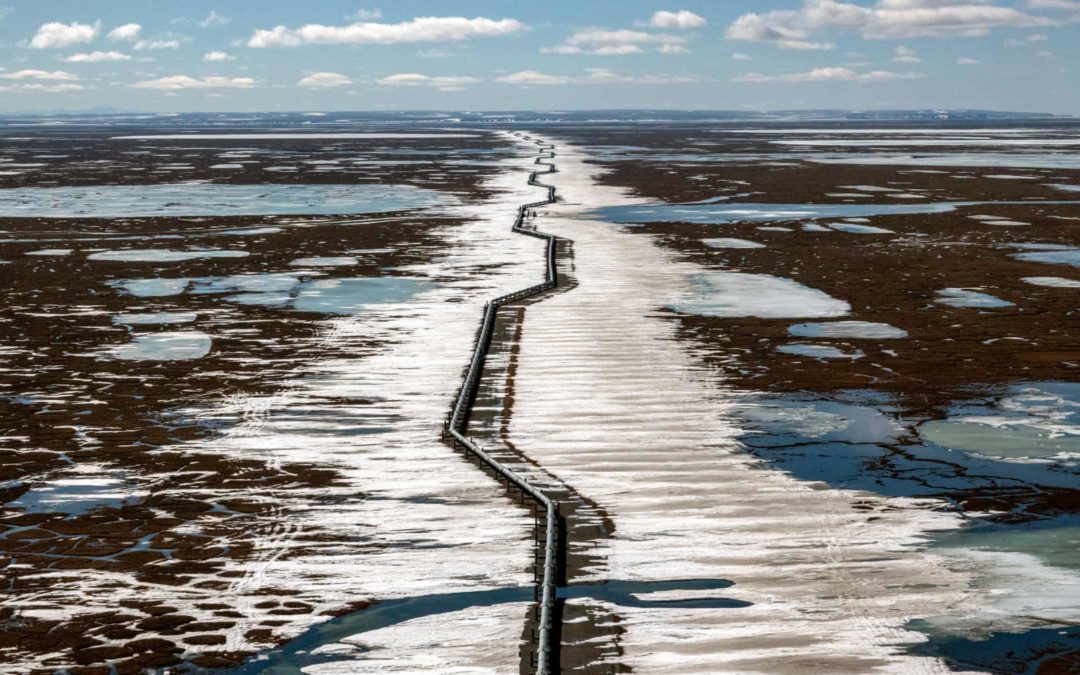SOURCE: The Guardian
DATE: October 19, 2020
SNIP: The oil company ConocoPhillips had a problem.
It wanted to pump 160,000 more barrels of oil each day from a new project on Alaska’s North Slope. But the fossil fuels it and others produce are leading to global heating, and the Arctic is melting. The firm’s drilling infrastructure could be at risk atop thawing and unstable permafrost.
A recent environmental review of the project describes the company’s solution: cooling devices that will chill the ground beneath its structures, insulating them from the effects of the climate crisis.
The oil development that is fueling climate change continues to expand in the far north, with companies moving into new areas even as they are paying for special measures to protect equipment from the dangers of thawing permafrost and increasing rainfall – both expected outcomes as Arctic temperatures rise three times as fast as those elsewhere.
Countries from Norway to Russia are advancing new Arctic oil developments. But under Donald Trump’s administration, Alaska has emerged as a hotbed of Arctic oil extraction, with big projects moving forward and millions of acres proposed to be opened to leasing.
The administration recently finalized its plan to open a piece of the Arctic national wildlife refuge to the oil industry. And drilling is expanding at an Indiana-sized region next door: the National Petroleum Reserve in Alaska, which, despite its name, also contains treasured subsistence areas for locals.
The North Slope is already warming at disconcerting speed. Utqiagvik, the region’s hub town, is one of the fastest-warming communities in the nation, with its five record warmest winters all coming since 2014.
Amid that rapid change, the oil industry is enjoying a renaissance in the region, in part thanks to technologies enabling infrastructure to withstand climatic shifts. Such technology is decades old, but veterans of the oil industry say that demand for it is becoming more ubiquitous and intense as the Arctic heats up.
One Alaska company, BeadedStream, sells equipment that measures and transmits tundra temperature data, so that the oil industry can know as soon as it is frozen solid enough to transport equipment, according to National Public Radio. Another firm, Arctic Foundations, is doing increasingly brisk business selling thermosiphons – the tubes that pull heat out of the ground to keep permafrost from thawing underneath oil infrastructure.
ConocoPhillips plans to make use of these devices at its massive Willow project in the National Petroleum Reserve, and it’s also building taller bridges and wider culverts to accommodate larger spring floods.

